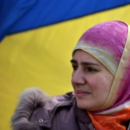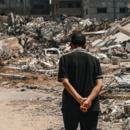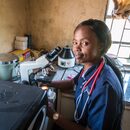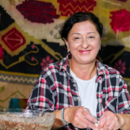Typhoon Koppu, known localy as Lando, hit the Philippines on October 14, 2015. It’s effects were mainly felt on the largest island of the Philippines, Luzon, in the north of country. The typhoon caused heavy rains , devastating floods and landslides after hitting seven regions in the central and northern part of Luzon. The tropical storm was accompanied by torrential rainfall that has yet to stop. Today, October 20, the storm struck the archipelago of Calayan and Bubayan.
The typhoon is moving over the mainland at a relatively slow pace and is predicted to fade by Sunday, October 25. Since the beginning of the typhoon there have been many material damages and losses of human lives - the floods have killed 18 people and at least seven have been injured.
In the provinces of Quirino, Nueva Vizcaya, Aurora, Apayao and Kalinga, residents were left without electricity and the cities Dinalugan, Dilasag and Casiguran in the Aurora province have been completely cut off from the rest of country. The national Disaster Risk Reduction & Management Council (NDRRMC) estimates that the typhoon has already directly affected about 300 000 people.
In Diocese, 17 provinces have been affected by the typhoon. Together with local authorities and the police, they have responded to the disaster by opening a total of 136 evacuation centers where they are evacuating the most vulnerable people. Diocesan Caritas are coordinating the work of the centers and the supply of food and drinking water.
The greatest danger of typhoon Koppu lies in its slow movement across the continent. It is moving at a speed of approximately 5 km/h over the Philippines. Relatively long stays over one place bring about tremendous rainstorms and floods and because of this it is currently very difficult to deliver aid in many areas due to persistent flooding and gales.
Above the northern parts of the island of Luzon there is still a very strong wind blowing and roads in many places have been flooded. This complicates access to people in need of aid and only one team has currently managed to reach Baler in the Aurora province, one of the hardest-hit areas. According to a survey in the field, humanitarian priorities now consist of food, shelter and drinking water supplies. Caritas Philippines (NASSA) plans to assist a total of 25,000 people in the form of food parcels, hygiene kits and emergency shelters.
In Manila, the capital city, a coordination meeting for Caritas and other international organizations was held between 19 and 20 October. The aim of this meeting was to determine the next steps to be taken. NASSA has established four teams that will go into the field on October 21 and 22 to determine the current situation and needs of the people.







